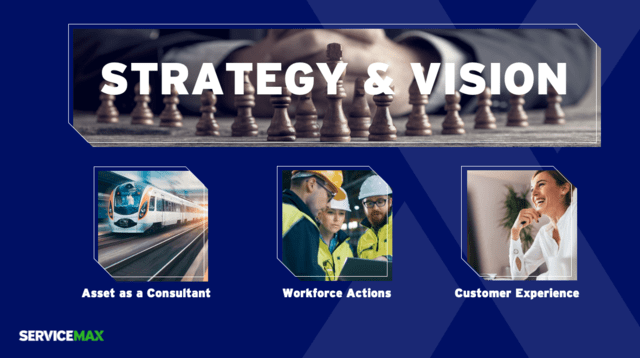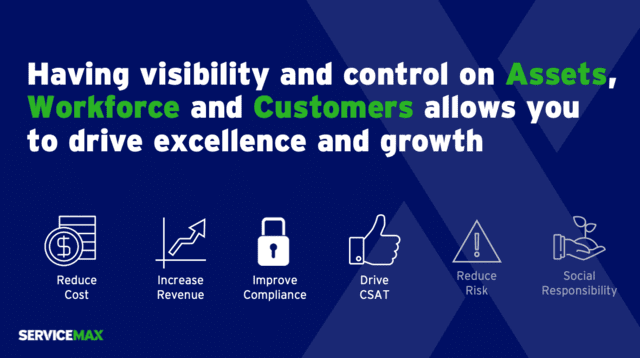An effective supply chain for parts is a crucial part of a successful field service operation. How much time does your technician spend on finding and receiving the correct spare parts? What is the impact to your customers when those parts are not available? What should you do with the defective, left-over and unused parts after the job?
These questions are a compound of conversations I have with customers when doing ride-alongs on service call-outs. They may sound pretty operational, but the implications are significant. Think about higher costs, loss of productivity, unnecessary capital tied up in inventory, repeat visits impacting uptime and customer satisfaction, lost residual material value and negative impact on your circularity goals. There is a lot to be gained from effectively managing your parts. To do this, you need to integrate your supply chain and service execution functions.
Not sold yet? Let’s dig further Into why you should integrate these functions and how it can benefit the business.
Why connect service and supply chain?
In many transformation journeys the initial focus is often on optimising labour to increase the productivity of both the technicians in the field as well as the supporting roles in the front and back office.
But optimisation does not end with labour. There are two very good reasons to accelerate supply chain integration into your service execution:
- You need a combination of consumables, spare parts and labour to maintain and fix non-digital products-equipment and assets.
- Your CFO will tell you that parts are the second largest cost component after labour.
- Having the right parts at the right time and place also optimizes labour productivity.
Though consumables and spare parts are intertwined with the labour component, supply chain integration and optimisation are habitually postponed until phase two of a digital transformation. But even if spare parts costs are second to labour, the implications of not having supply chain integrated into your service execution process are substantial for multiple personas and justify inclusion in phase one.
How does this impact technicians?
In many organisations, supply chain is a separate function with Its own business processes and tooling, resulting in a disconnect with service execution. I’ve seen technicians using email, whatsapp and Excel to order parts and to keep track of forward and reverse logistics. I’ve seen duplicate entry, swivel chair processes and multi-disconnected-tooling. In those situations, the technician works for the tool instead of the tool working for the technician.
If it were up to technicians, having an integration between service execution and supply chain would be high on their wish list. It would make their life easier and would help them in becoming the hero on site.
Can service and supply chain resolve conflicting goals?
From a supply chain perspective there is an ambiguity regarding the necessity for holding inventory. Financially, inventory is tied-up capital, and you want to reduce that. On the other hand, you need inventory to meet contractual response times and uptime commitments.
In contrast, service leaders can easily articulate the need for spare parts. But those same leaders find it difficult to determine how much. Supply chain leaders typically have a year-over-year target to reduce inventory. Sounds conflicting? Maybe not with modern and integrated tooling.
Here’s what have we learnt from the ride-along — if supply chain has access to the ‘raw’ requisitioning, consumption and return data from the technicians, supply chain can do better inventory planning as well as optimise the forward and reverse logistics flows.
In the end you’ll have multiple winners when labour and parts work in unison:
- Customer — higher first time fix and less downtime.
- Technician — less admin, track & trace visibility of parts, guidance for returns.
- Service leader — less parts leakage, higher parts accountability, higher CSAT.
- Supply chain — insight in true consumption, more leadtime visibility (less expediting).
- CFO — less purchase of non-consumed parts, lower inventory, less scrap, less logistics cost.
Supply chain and service have many different projects and priorities, but it is in the best interest of your engineers, customers and CFO to integrate your supply chain and service function in the first phase of your digital transformation.
For more on the benefits of connecting service and supply chain, check out What Value Does Asset Data Hold for the Supply Chain?
This article is published on Diginomica.











